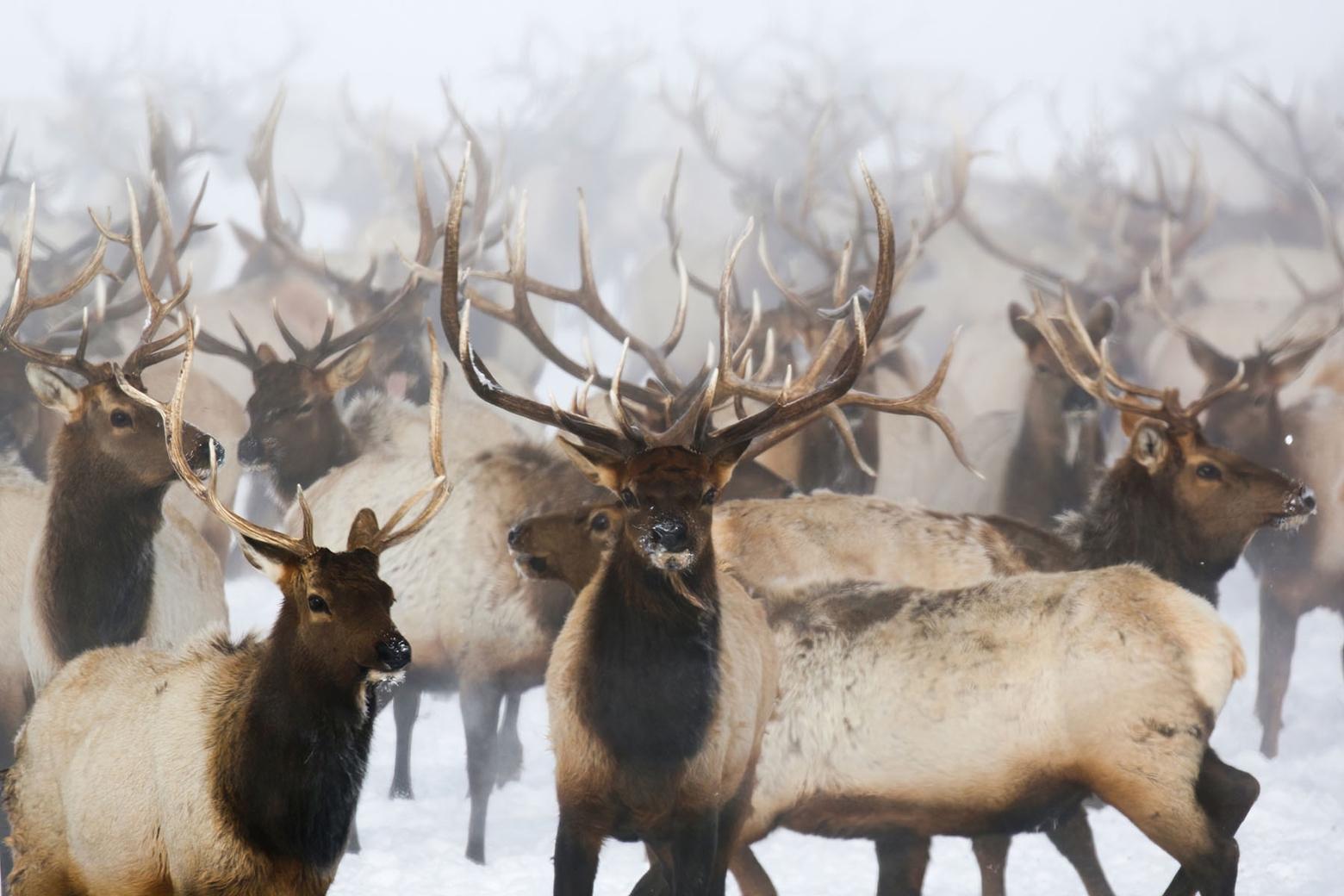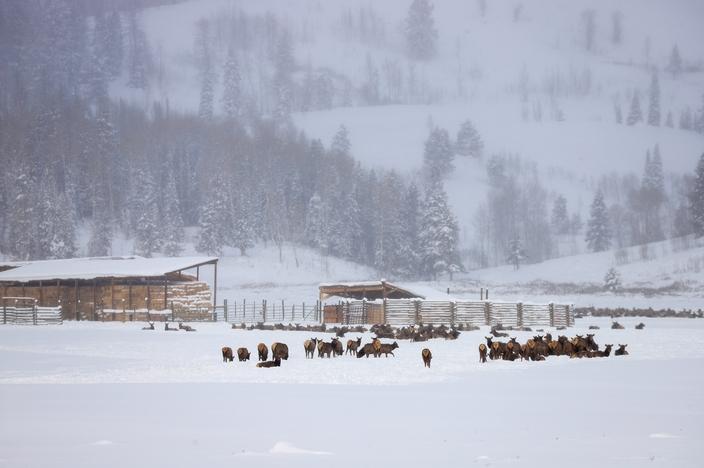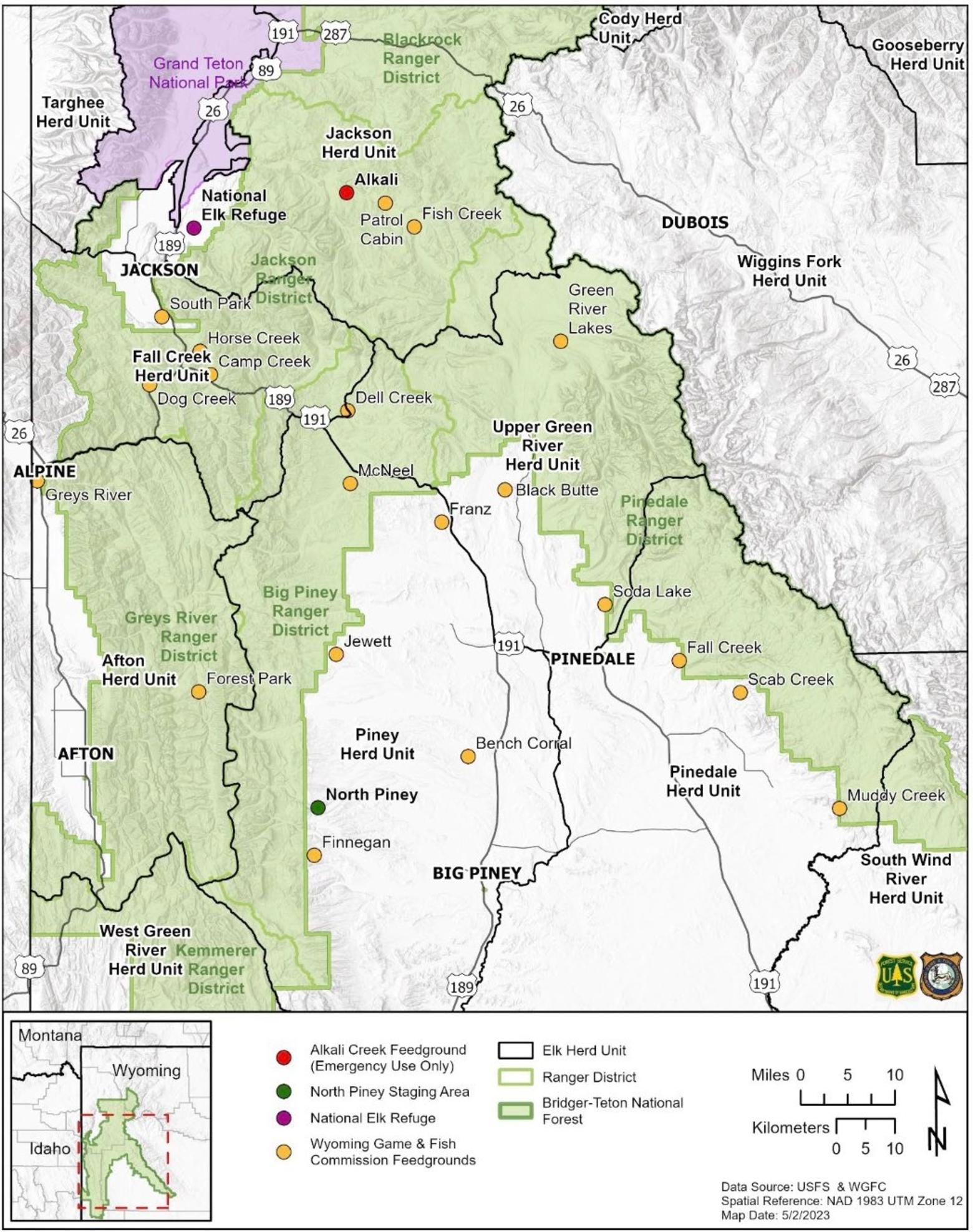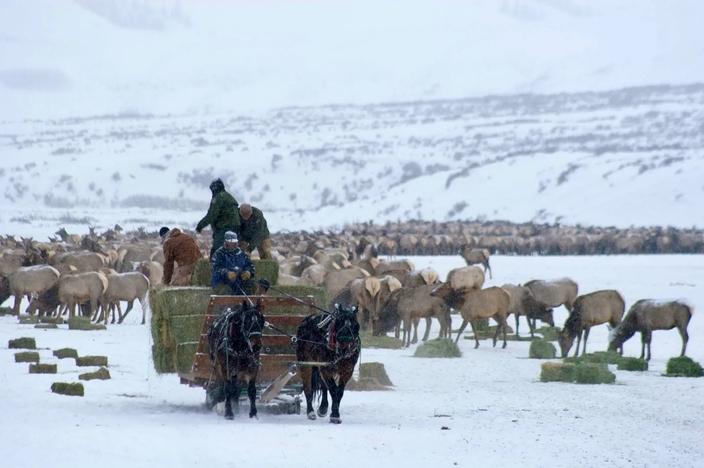Back to StoriesTwo Wyoming Elk Feedgrounds in Limbo Amid CWD Concerns
December 21, 2023
Two Wyoming Elk Feedgrounds in Limbo Amid CWD ConcernsGame and Fish department weighs whether or not to close two feedgrounds for elk safety
by Julia
Barton
Wyoming
elk are in trouble.
Land
managers predict that chronic wasting disease will cause elk populations in the
Afton and Upper Green River herd units to drop by 35 and 57 percent
respectively over the next two decades if two northwestern Wyoming feedgrounds
continue operating.
The Dell
Creek and Forest Park feedgrounds, managed by the Wyoming Game and Fish
Committee, have been operating under recently expired special-use permits since
the 1970s to operate in the Bridger-Teton National Forest. Both have requested
new 20-year permits but the U.S. Forest Service is concerned about the spread
of chronic wasting disease.
CWD is a
fatal neurological illness found in cervids that, since its discovery in 1967,
has spread across 23 states and into two Canadian provinces. Yellowstone
National Park recorded its first CWD case earlier this year.
The
Forest Service last month released a draft
environmental impact statement assessing implications of four
scenarios at the two feedgrounds: permitting the feedgrounds to operate as is;
a three-year phase-out; emergency feeding only; and ceasing use of the
feedgrounds altogether. The agency did not list a preference in the statement.
“We
didn’t select a preferred alternative in the DEIS because there’s a couple of
dual processes going on right now,” said Randy Griebel, ecosystem staff officer
for the Bridger-Teton forest, referring to ongoing feedground analyses by the
National Elk Refuge and the state of Wyoming. “We didn’t want to influence them
and vice versa.”
Supplemental
winter feeding has been used to manage elk in the region for over a century in
an effort to reduce wildlife damage, maintain populations for hunting
opportunities, and keep elk off of private land. Together, the two feedgrounds
serve an average of over 1,000 elk annually from mid-November through April.
Griebel explained that while the use of these feedgrounds has a relatively
small impact on regional elk populations, feedgrounds as a whole carry massive
implications, and the DEIS considers both scales.
Discovered in 1967, CWD is a fatal neurological illness found in cervids that has now spread across 23 U.S. states and into two Canadian provinces.
According
to a U.S. Geological
Survey study used to inform the Forest Service’s impact statement,
closing feedgrounds in western Wyoming would likely cause a steep and immediate
dropoff in regional elk numbers. But the elk would benefit in the long-term.
“The
closure of Forest Park and Dell Creek feedgrounds would reduce the total number
of CWD mortalities by 9 percent in the Upper Green River Herd Unit and 26
percent in the Afton Herd Unit during the 20-year timespan,” the USGS study
predicted.
CWD
isn’t the only variable factoring into the decision. Other issues evaluated in
the impact statement include transmission of brucellosis to livestock, economic
impacts on agricultural production, hunting, and habitat, among others.
“It’s a
really difficult management decision,” Griebel said. “The ramifications of
[each alternative] have different impacts on different groups of people.”
Given that
a recommendation wasn’t made in the DEIS, Griebel said that the Bridger-Teton
National Forest is eager to receive feedback from the public regarding the
proposed alternatives. Public
comment is open until January 16, 2024.
_______________________________________________________________________________________________________________________________
Mountain Journal is the only nonprofit, public-interest journalism organization of its kind dedicated to covering the wildlife and wild lands of Greater Yellowstone. We take pride in our work, yet to keep bold, independent journalism free, we need your support. Please donate here. Thank you.
Related Stories
August 29, 2024
Wyoming Researcher Receives Aldo Leopold Award
The American Association of Mammalogists recognized Matthew Kauffman for his lasting conservation contributions through migration
studies.
January 24, 2024
Wolves: Love Them or Hate Them?
Results from a recent survey by Montana Fish, Wildlife and Parks and the University of Montana finds growing
tolerance toward wolves among...
March 26, 2024
Taking Account of Gallatin County
Officials are seeking public input to inform
Future Land Use Map and Housing Strategy.







